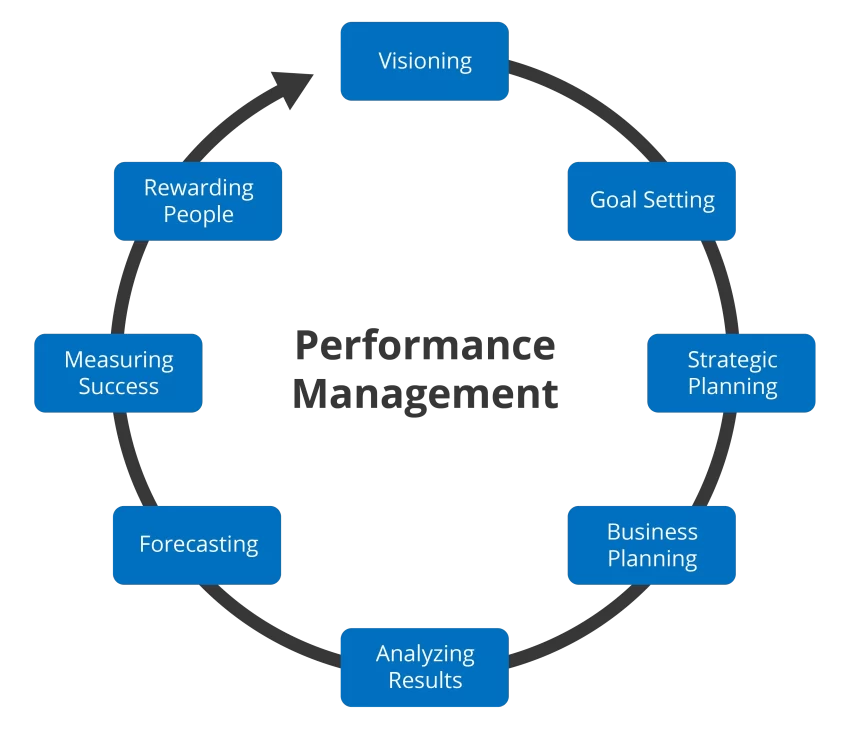A Performance Management System (PMS) is a strategic approach that organizations use to measure, manage, and improve employee performance. It involves setting clear performance expectations, collecting data, providing feedback, and ensuring employees have the tools and resources they need to meet their goals.
A well-designed performance management system is crucial for organizational success. It allows companies to align individual and team objectives with overall business objectives. By regularly tracking and evaluating performance, organizations can identify strengths, weaknesses, and areas for improvement. This data-driven approach helps in making informed decisions related to promotions, rewards, training, and career development.
The Key Components of Performance Management Systems
Effective performance management systems consist of several key components:
1. Goal Setting
Clear and measurable goals are essential for effective performance management. Goals should be specific, attainable, relevant, and time-bound (SMART). When employees have clear expectations and goals to work towards, they are more likely to stay motivated and aligned with organizational objectives.
2. Performance Tracking and Evaluation
Regular performance tracking and evaluation are essential to measure progress and identify areas for improvement. This can be done through ongoing feedback, performance reviews, and objective assessments. It is important to use a combination of qualitative and quantitative measures to gain a comprehensive understanding of employee performance.
3. Continuous Feedback and Coaching
Providing regular feedback and coaching is crucial for employee development. Managers should offer constructive feedback, praise achievements, and provide guidance on how employees can further improve their performance. This two-way communication encourages a culture of continuous learning and development.
4. Training and Development
Training and development opportunities help employees acquire new skills and knowledge to perform better. Performance management systems should include provisions for identifying training needs, providing relevant training programs, and tracking the impact of training on individual and team performance.
5. Performance Appraisal and Rewards
Performance appraisals are formal evaluations of employee performance against pre-established goals and criteria. These appraisals help in making decisions related to promotions, salary increases, bonuses, and other rewards. It is important to ensure that the appraisal process is fair, transparent, and consistent.
The Benefits of Performance Management Systems
Implementing an effective performance management system can bring numerous benefits to an organization:
1. Improved Individual and Team Performance
Performance management systems help employees understand their roles and responsibilities clearly, set challenging but achievable goals, and receive feedback and coaching. This leads to improved individual and team performance, as employees are motivated to excel and align their efforts with broader organizational goals.
2. Increased Employee Engagement and Satisfaction
When employees receive regular feedback and recognition, they feel valued and engaged in their work. A performance management system fosters a positive work culture and boosts employee satisfaction, resulting in higher levels of productivity and lower turnover rates.
3. Enhanced Decision-making Process
Data-driven performance evaluations provide valuable insights into employees’ strengths, weaknesses, and areas for improvement. This information helps in making informed decisions related to promotions, transfers, training, and development initiatives. By aligning individual goals with company objectives, organizations can make better strategic decisions.
4. Employee Development and Growth
A performance management system serves as a roadmap for individual and team development. By identifying performance gaps, organizations can provide targeted training and development opportunities that enhance employees’ skills and competencies. This not only improves performance but also contributes to career growth and job satisfaction.
5. Increased Accountability and Transparency
Implementing a performance management system creates a culture of accountability and transparency. When employees are aware of the performance expectations and evaluation criteria, they become more accountable for their actions and outcomes. Transparent performance evaluations also promote fairness and prevent biases.
Conclusion
A performance management system is crucial for organizations to maximize employee potential, align individual efforts with organizational objectives, and drive overall productivity and success. By implementing the key components discussed above, organizations can create a culture of continuous improvement, employee development, and outstanding performance.

